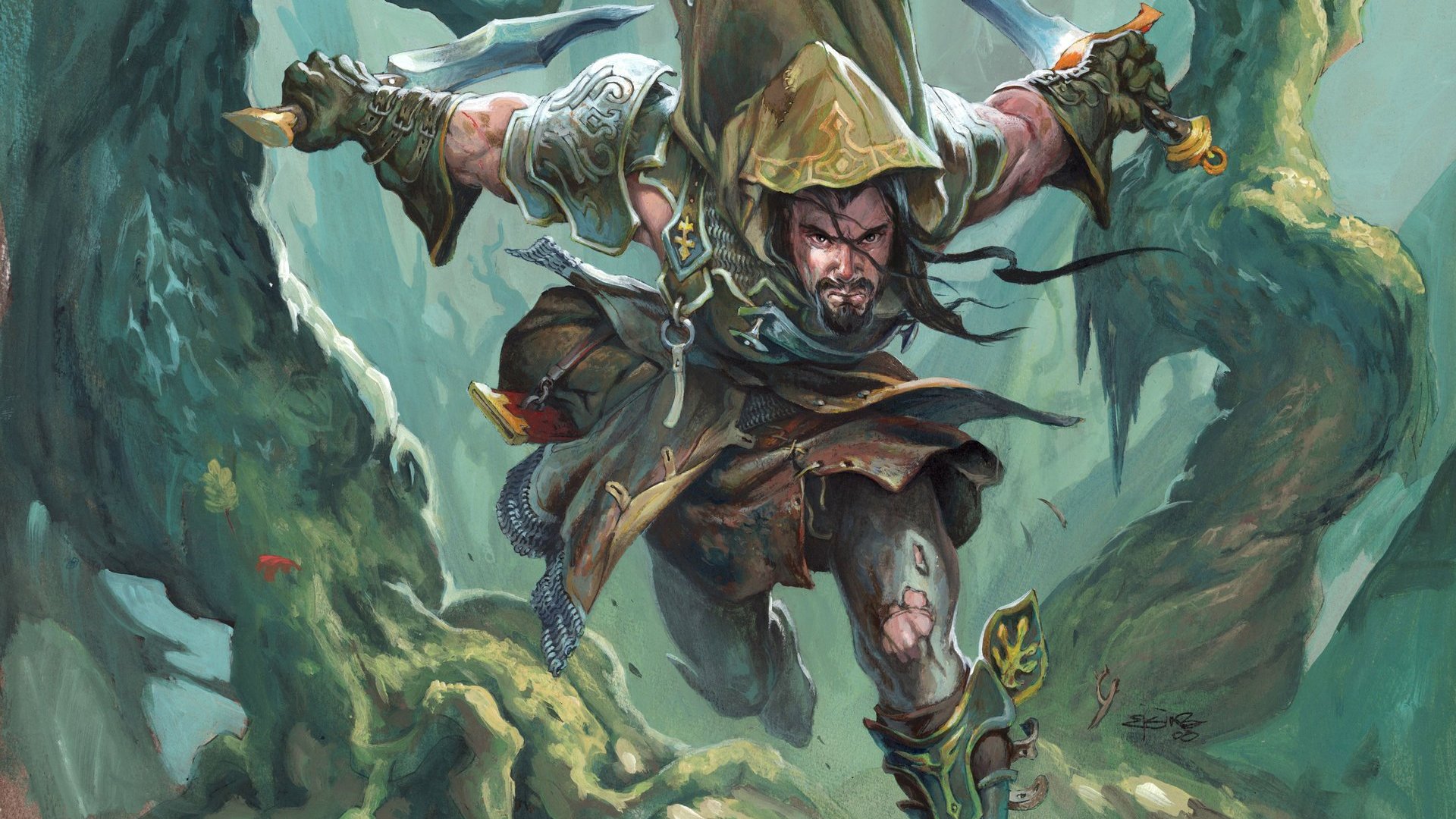DnD Ranger 5e class guide

The DnD Ranger 5e class is a dexterous martial fighter, as adept with a bow as they are with a finesse weapon in close quarters. These abilities are backed up by nature-based spells and skills that make the Dungeons and Dragons Ranger naturally versatile, able to provide healing, utility, and combat backup to their adventuring allies. This guide explains how the 5e Ranger class works and provides expert tips for playing one.
Admittedly, the Ranger isn’t as well-regarded as some other DnD classes power-wise, but they can be formidable when optimized correctly. If you’re keen to take on this role, be sure to check out our DnD races and DnD 2024 backgrounds guides for more advice on filling your character sheet.
DnD Ranger 5e explained:
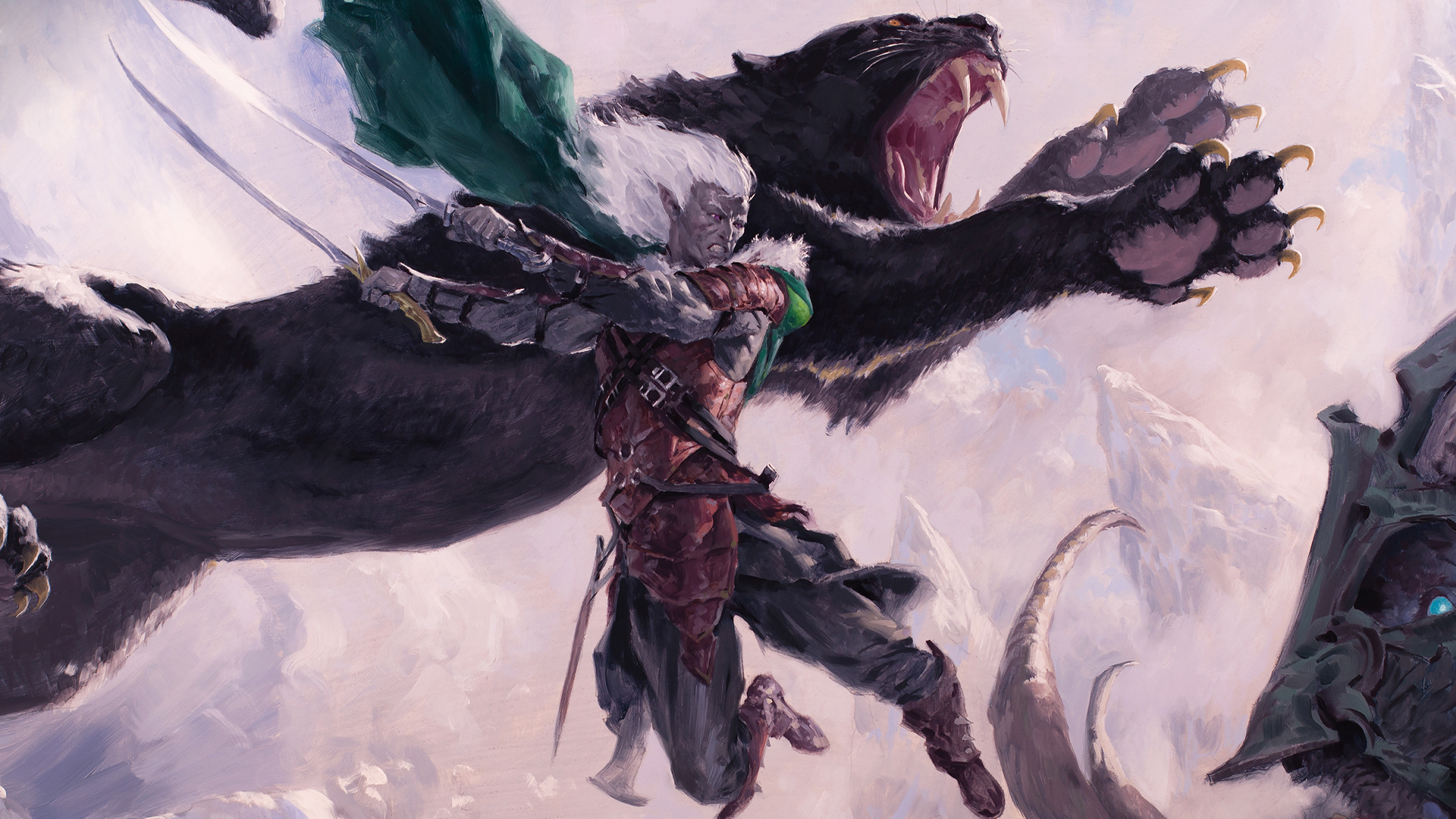
Starting stats
| Primary ability | Dexterity and Wisdom |
| Hit Point Die | D10 per Ranger level |
| Saving throw proficiencies | Strength and Dexterity |
| Skills | Choose three: Animal Handling, Athletics, Insight, Investigation, Nature, Perception, Stealth, or Survival |
| Weapons | Simple and martial |
| Armor training | Light and medium armor, shields |
| Equipment | Choose A or B: (A) Studded leather armor, scimitar, shortsword, longbow, 20 arrows, quiver, Druidic Focus, Explorer’s Pack, and 7 GP; or (B) 150 GP |
Regardless of whether you’re looking to focus on ranged or close combat, concentrate on Dexterity (Dex) as your primary attribute. Even in melee, you can use Dex as a primary statistic on any weapon that comes with the ‘finesse’ quality.
Crucially, Dex is the primary statistic for ranged combat, naturally one of the biggest draws to playing as a Ranger. Maintaining a high Dex statistic also supports Acrobatics, Armour Class, and even Stealth – which is another specialty for the class. Basically, you want Dex to be your main focus if you intend to play the class to its fullest potential. Rangers can cast spells with their casting attribute in Wisdom (Wis), so this should be your secondary focus, with Strength (Str) and Intelligence (Int) being your DnD stats to dump.
Spellcasting
Level: One
Like many other classes, Rangers can use spell slots to cast a number of DnD spells. Wisdom is their spellcasting ability, they can use a Druidic Focus as part of their spellcasting, and they regain all spent spell slots on a long rest. Rangers can also swap one of their prepared spells with another from the Ranger spell list during a long rest.
| Ranger level | Spell slots per spell level | |||||
| Prepared spells | 1 | 2 | 3 | 4 | 5 | |
| 1 | 2 | 2 | – | – | – | – |
| 2 | 3 | 2 | – | – | – | – |
| 3 | 4 | 3 | – | – | – | – |
| 4 | 5 | 3 | – | – | – | – |
| 5 | 6 | 4 | 2 | – | – | – |
| 6 | 6 | 4 | 2 | – | – | – |
| 7 | 7 | 4 | 3 | – | – | – |
| 8 | 7 | 4 | 3 | – | – | – |
| 9 | 9 | 4 | 3 | 2 | – | – |
| 10 | 9 | 4 | 3 | 2 | – | – |
| 11 | 10 | 4 | 3 | 3 | – | – |
| 12 | 10 | 4 | 3 | 3 | – | – |
| 13 | 11 | 4 | 3 | 3 | 1 | – |
| 14 | 11 | 4 | 3 | 3 | 1 | – |
| 15 | 12 | 4 | 3 | 3 | 2 | – |
| 16 | 12 | 4 | 3 | 3 | 2 | – |
| 17 | 14 | 4 | 3 | 3 | 3 | 1 |
| 18 | 14 | 4 | 3 | 3 | 3 | 1 |
| 19 | 15 | 4 | 3 | 3 | 3 | 2 |
| 20 | 15 | 4 | 3 | 3 | 3 | 2 |
Best Ranger spells
Rangers aren’t blessed with many spell slots, so it’s essential to make the most of the spells you can take. As such, here’s a breakdown of some of the best Ranger spells you can take as a beginner.
Hunter’s Mark (Level 1)
Hunter’s Mark is a must-have for any Ranger, and many of your features rely on you using it. Slap it on an enemy, and you’ll deal an extra 1d6 Force damage to that target whenever you make a weapon attack, with an advantage on any Perception (Wis) or Survival (Wis) check. Unsurprisingly, Hunter’s Mark comes in most useful when you’re fighting a single Strength-based foe, as opposed to when mobbed by multiple enemies.
Fog Cloud (Level 1)
Fog Cloud creates a 20-foot-radius sphere of fog on a point within range which can be plenty useful in a pinch. When you need to lose a chasing horde or to disrupt ranged enemies taking shots at your party, Fog Cloud is an excellent spell to have in your back pocket.
Ensnaring Strike (Level 1)
Casting this as a bonus action (with Concentration), you can pin an enemy in thorny magical vines until the spell ends. While restrained, the enemy takes 1D6 piercing damage at the start of each new turn. Whether it’s pinning down a marauding foe before they can reach your lines, or trapping their back-line spellcaster in place so your Rogue can dart forward and finish them off, Ensnaring Strike can be highly useful for low-level crowd control.
Silence (Level 2)
Inside and outside battle, Silence is an incredible spell. When casting Silence, you create a 20-foot-diameter bubble, anywhere up to a range of 120 feet, where no sound can pass through or be created.
You can be creative with Silence – sure, its main use is to stop a spellcaster using verbal spells, but it could also stifle communication between two people. It’s worth noting, too, that this spell can prevent Thunder damage – relevant if you’re facing an enemy who uses this as their main damage output.
Pass Without Trace (Level 2)
Outside of combat, this spell can be key to your party’s survival. When cast, you and your companions are masked from detection: each creature you choose, within 30 feet of you, gets a +10 bonus to Dex (Stealth) checks. This spell is incredible when escaping from powerful enemies, or setting up a surprise attack.
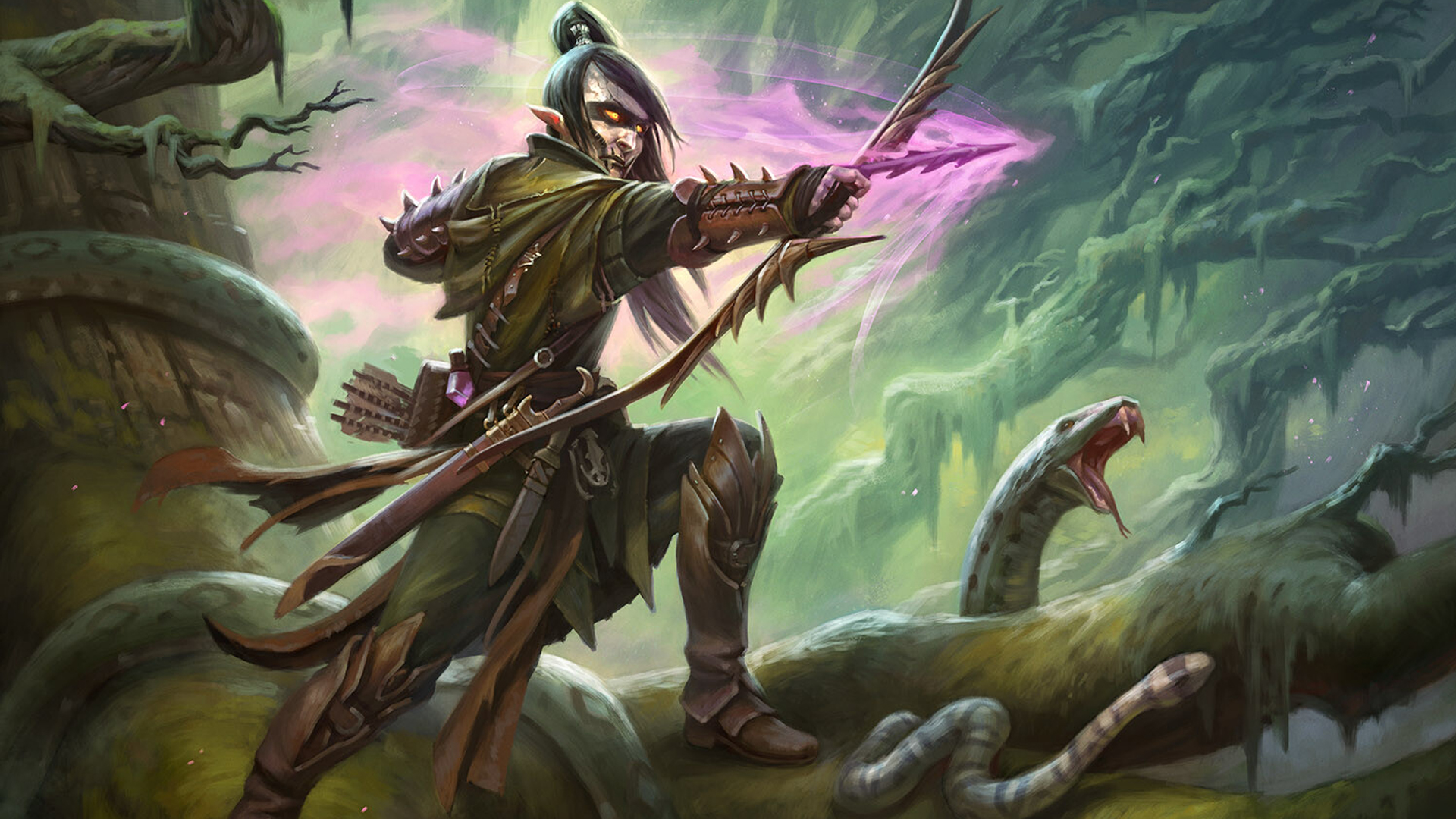
Favored Enemy
Level: One
Favored Enemy gives you the classic Ranger spell Hunter’s Mark as an always-prepared spell and lets you cast it twice per long rest without using a spell slot. When you reach level five, you can cast it three times without a spell slot. This increases to four times from level nine, five times from level 13, and six times from level 17.
Weapon Mastery
Level: One
Deft Explorer
Level: Two
Deft Explorer means that you gain expertise in a skill, letting you double your proficiency bonus when rolling for that skill. You also learn two extra DnD languages.
Fighting Style
Level: Two
You choose a Fighting Style from the list of feats. More specifically, you can choose from:
- Archery – +2 to attack rolls with ranged weapons.
Blind Fighting – Gain 10ft of Blindsight. - Defense – +1 to armor class while in light, medium, or heavy armor.
- Dueling – While wielding a single one-handed melee weapon, your damage rolls with it get +2.
- Great Weapon Fighting – When rolling damage for a two-handed or versatile melee weapon, any 1 or 2 on the die is a 3.
- Interception – When a creature you see hits another creature within five feet of you with an attack roll, you can spend a reaction to reduce the damage by 1d10 plus your proficiency bonus.
- Protection – When you see a creature attack a target other than you within five feet, you can use a reaction and your shield to give the attacker’s attack rolls disadvantage until the start of your next turn (as long as they stay within five feet).
- Thrown Weapon Fighting – Add +2 to damage rolls with Thrown weapons.
- Two-Weapon Fighting – When making an extra attack with a Light weapon, add your ability modifier to the damage.
- Unarmed Fighting – Unarmed strikes can deal bludgeoning damage equal to 1d6 plus your Strength modifier, or a d8 if you aren’t holding weapons or a shield.
Alternatively, you can learn two DnD Druid cantrips. These count as Ranger spells for you, can be cast with Wisdom as your spellcasting ability, and can be swapped any time you gain a Ranger level.
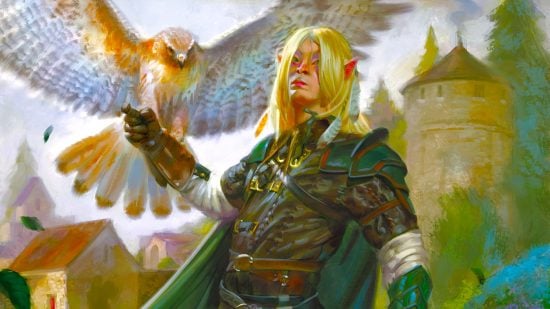
Ranger Subclass
Level: Three
From level three, you specialize in a particular Ranger subclass:
Beast Master
Found in: Player’s Handbook (2024)
A Beast Master Ranger’s main gimmick is their command over animals. This is primarily seen in their level-three Primal Companion ability, which lets them summon a supernatural ‘primal’ beast of the land, sea, or sky.
You get to choose the beast’s specific form, and its stats are tied to yours. For instance, your Wisdom modifier affects damage, while your level determines HP. You can summon a new beast with a different appearance after each long rest.
Your beast acts during combat on your turn, and while it can move or react, you have to spend a bonus action if you want it to attack or take any action except Dodge. You can also give up one of your attacks whenever you take the Attack action to give the beast an extra attack. If your beast dies you can spend one minute and a spell slot to bring it back to life with full HP.
From level seven, Exceptional Training lets your beast companion deal force damage or their regular DnD damage type. Additionally, when you command your Primal Companion, you can also have it spend its bonus action to Dash, Disengage, Dodge, or Help.
The level-13 Bestial Fury ability lets your companion attack twice when they take the Beast’s Strike action. Plus, the first time it hits a creature affected by your Hunter’s Mark on a turn, they deal extra force damage equal to the spell’s bonus damage. Finally, at level 15, Share Spell lets spells you cast that target yourself affect your Primal Companion too.
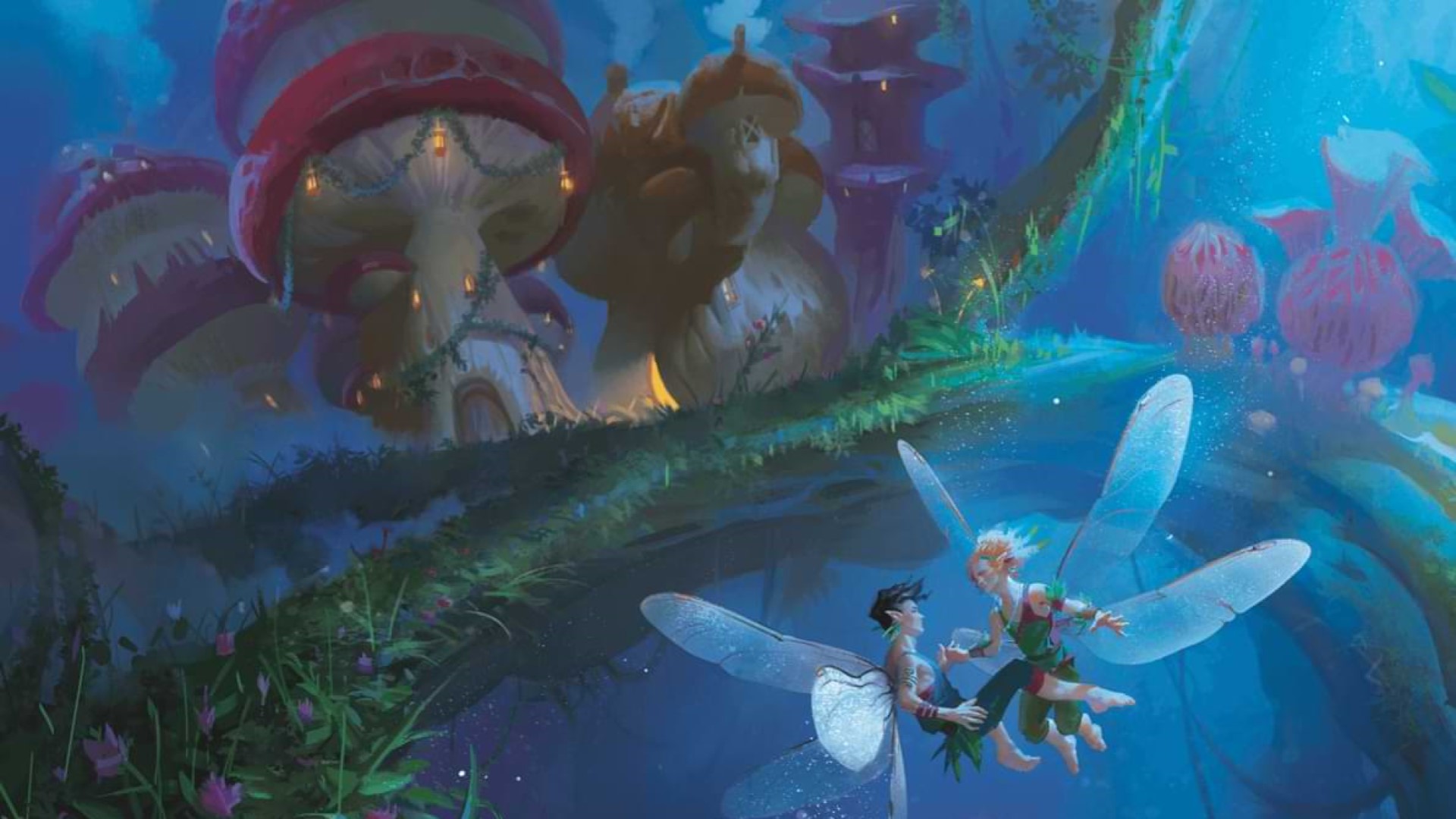
Fey Wanderer
Found in: Player’s Handbook (2024)
A Fey Wanderer gains their unusual abilities from their experiences traversing the Feywild. The first boon this gives them is a list of spells that are always prepared:
| Ranger level | Spell |
| 3 | Charm Person |
| 5 | Misty Step |
| 9 | Summon Fey |
| 13 | Dimension Door |
| 17 | Mislead |
The level-three Dreadful Strikes ability lets you deal an extra 1d4 psychic damage when you hit a creature with a weapon. This goes up to 1d6 at Level 11. Each creature can only take this damage once per turn. Also at level three, Otherworldly Glamor gives you a bonus to Wisdom checks equal to your Wis modifier, as well as proficiency in either Deception, Persuasion, or Performance.
From level seven, Beguiling Twist gives you advantage on saving throws to avoid or end the Charmed or Frightened conditions. Also, when a creature within 120 feet of you avoids or ends one of these conditions, you can force another creature within that distance of you to make a Wisdom save or have that effect transferred to them.
At level 11, Fey Reinforcements lets you cast Summon Fey without material components or concentration (though doing so means the spell only lasts for one minute). You can also cast it once per long rest without using a spell slot.
Level 15 offers Misty Wanderer, an ability that lets you cast Misty Step without spell slots a number of times equal to your Wisdom modifier per long rest. You can also bring a willing person within five feet of you with you when you cast the spell.
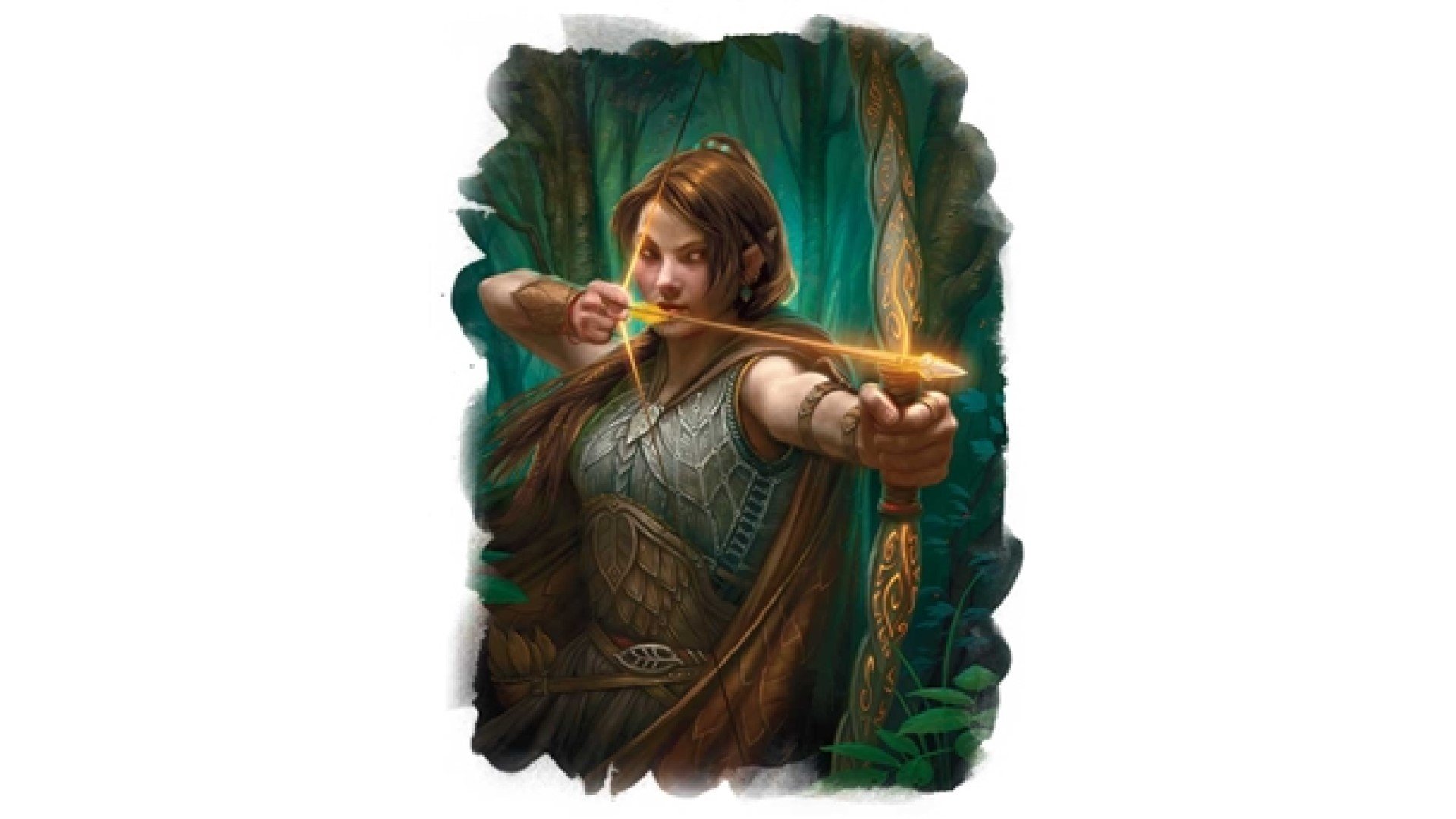
Gloom Stalker
Found in: Player’s Handbook (2024)
The Gloom Stalker is the Ranger equivalent of a DnD Rogue, as they’re extra nimble and stealthy. At level three, Dread Ambusher adds your Wisdom modifier to initiative rolls and gives you 10ft of extra speed on the first turn of combat.
Plus, when you hit a creature with a weapon you have the option of dealing an extra 2d6 psychic damage. You can use this damaging effect once per turn, and have a limited number of uses per long rest (determined by your Wisdom modifier).
You’ll also gain some new, always-prepared spells from level three:
| Ranger level | Spells |
| 3 | Disguise Self |
| 5 | Rope Trick |
| 9 | Fear |
| 13 | Greater Invisibility |
| 17 | Seeming |
Finally, level three comes with Umbral Sight which gives you 60 feet of Darkvision (or 60 more if you already have it). Plus, a hallmark of this subclass, while in complete darkness, you are invisible to creatures that would typically use their Darkvision to see you.
At level seven, Iron Mind gives you proficiency in Wisdom saving throws – or Intelligence and Charisma saves if you were already proficient with Wisdom saves.
Level 11 brings Stalker’s Flurry, which increases the extra damage dealt by Dread Ambusher to 2d8. Whenever you use that effect on a creature you can either make another attack against a second creature within five feet or make your target and everything within 10 feet of it have the frightened condition until the beginning of your next turn.
Lastly comes Shadowy Dodge at level 15. You can use a reaction to impose disadvantage on an attack roll made against you. After it resolves, you get to teleport 30 feet to a space you can see.
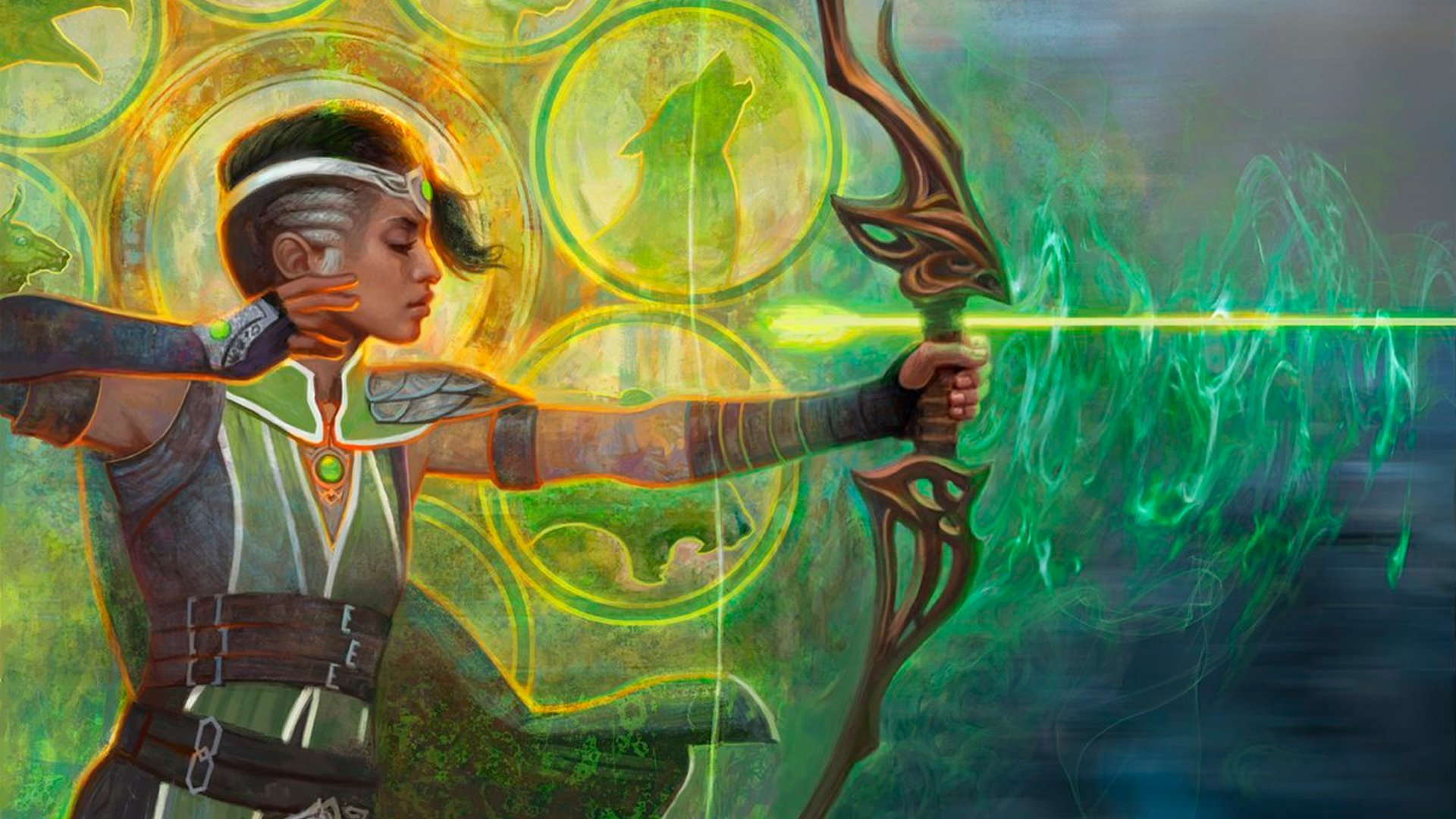
Hunter
Found in: Player’s Handbook (2024)
As the name implies, a Hunter has all the skills needed to track and kill. This starts at level three with Hunter’s Lore, which lets you know if a creature affected by your Hunter’s Mark has any particular immunities, resistances, or vulnerabilities.
Also at level three comes Hunter’s Prey, which gives you one of two benefits:
- Colossus Slayer – Once per turn, a weapon attack deals an extra 1d8 damage to creatures missing any of their hit points.
- Horde Breaker – Once on your turn, when you make a weapon attack, you can make another attack with the same weapon against a different creature within five feet that you haven’t already attacked.
Any time you rest, you can swap your choice of option. At level seven, Defensive Tactics gives you two additional options to choose from (which can also be swapped on a short or long rest):
- Escape the Horde – Opportunity attacks against you have disadvantage.
- Multiattack Defense – A creature that hits you with an attack roll has disadvantage on all other attack rolls against you that turn.
Level 11’s Superior Hunter’s Prey means that, when you deal extra damage to a creature affected by Hunter’s Mark, you can deal that extra damage to a different monster within 30 feet of the first target. And finally, Superior Hunter’s Defense lets you use your Reaction to give yourself resistance to a damage type you’re about to be hit by from level 15.
Swarmkeeper
Found in: Tasha’s Cauldron of Everything
With Swarmkeeper, you can conjure swarms or spirits of nature, which can attack enemies, push them away from you, and more. You get decent spellcasting options that complement the Druidic Warrior Fighting Style. Swarmkeeper is a popular choice as it’s flavorful, and offers plenty of aesthetic juice for D&D players.
As you level up, your Swarm becomes more powerful. At seventh level, Writhing Tide lets you have the swarm fly you around the battlefield in its winged embrace.
At 11th level, the Swarm’s attacks do more damage, it knocks enemies prone when it carries them away from you, and it grants you half cover whenever you use Writhing Tide to fly. Finally, at 15th level, Swarming Dispersal lets you not only give yourself resistance to damage from an attack, but dissolve into your Swarm and teleport up to 30 feet away. Neat, huh?
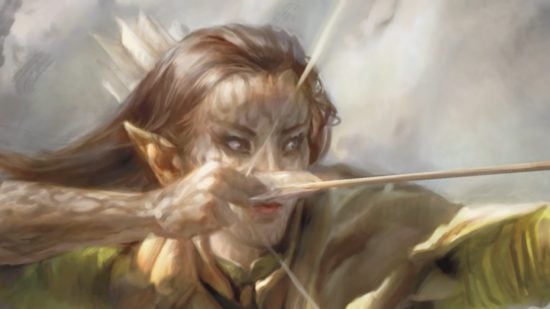
Monster Slayer
Found in: Xanathar’s Guide to Everything
The Monster Slayer cares about analyzing enemies and expands on the Hunter subclass with more options. At third level, you’ll also get Slayer’s Prey, an ability that piles extra damage onto a single target, stacking with the damage from Hunter’s Mark. And at seventh, Supernatural Defense kicks in, giving you additional bonuses to saving throws and escaping grapples.
From there, your superlative shut-down skills keep getting better. At 11th level, Magic-User’s Nemesis allows you to cancel out your enemies’ spells (in the manner of Warhammer 40k’s Deny The Witch), and, at 15th level, Slayer’s Counter lets you make a free single weapon attack against your Slayer’s Prey any time that you would have to make a saving throw against it. If the attack hits, the save automatically passes, and you do damage with the attack; it’s pretty savage.
Horizon Walker
Found in: Xanathar’s Guide to Everything
In terms of strategy, Horizon Walkers play similarly to Gloom Stalkers when it comes to versatility – but, instead of skulking in shadows, these folks prefer to hop between dimensions.
Your subclass abilities start off strong, with Planar Warrior allowing you to use a Bonus Action to lump extra force damage onto your normal attacks. Ethereal Step, added at seventh level, grants you spell-slot-free access to the Etherealness spell, which is great for hijinx; jump to the Ethereal Plane for a turn, blink across the battlefield, and materialize right behind the enemy boss – why not, eh?
You’ll top out, at 15th level, with Spectral Defense. When you’re about to take hits, you can use this ability to effectively phase in and out of the current plane of existence, granting resistance to any attacks for the rest of the turn.
Not the flashiest or most bombastic of Ranger subclasses, possibly – but there’s a lot to be said for its ultra-mobility and sense of mystique.
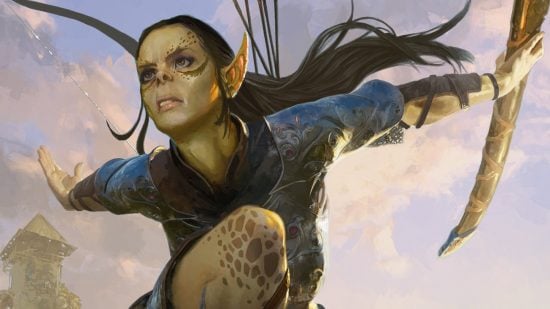
Ability Score Improvement
Level: Four, Eight, 12, 16
Each time you unlock an Ability Score Improvement you have the choice of gaining +1 to two stats, +2 to one stat, or a feat you meet the prerequisites for.
Extra Attack
Level: Five
Extra Attack means that you can attack twice instead of once when you take the attack action on your turn.
Roving
Level: Six
Thanks to Roving, your speed now increases ten feet while you’re not wearing heavy DnD armor, and you get a climb and swim speed equal to your regular speed.
Expertise
Level: Nine
You get Expertise in two more skills you were already proficient in.
Tireless
Level: 10
With Tireless, the Ranger can spend an action to give themselves temporary HP equal to 1d8 plus their Wisdom modifier. This can be done a number of times equal to their Wisdom modifier before they need a long rest.
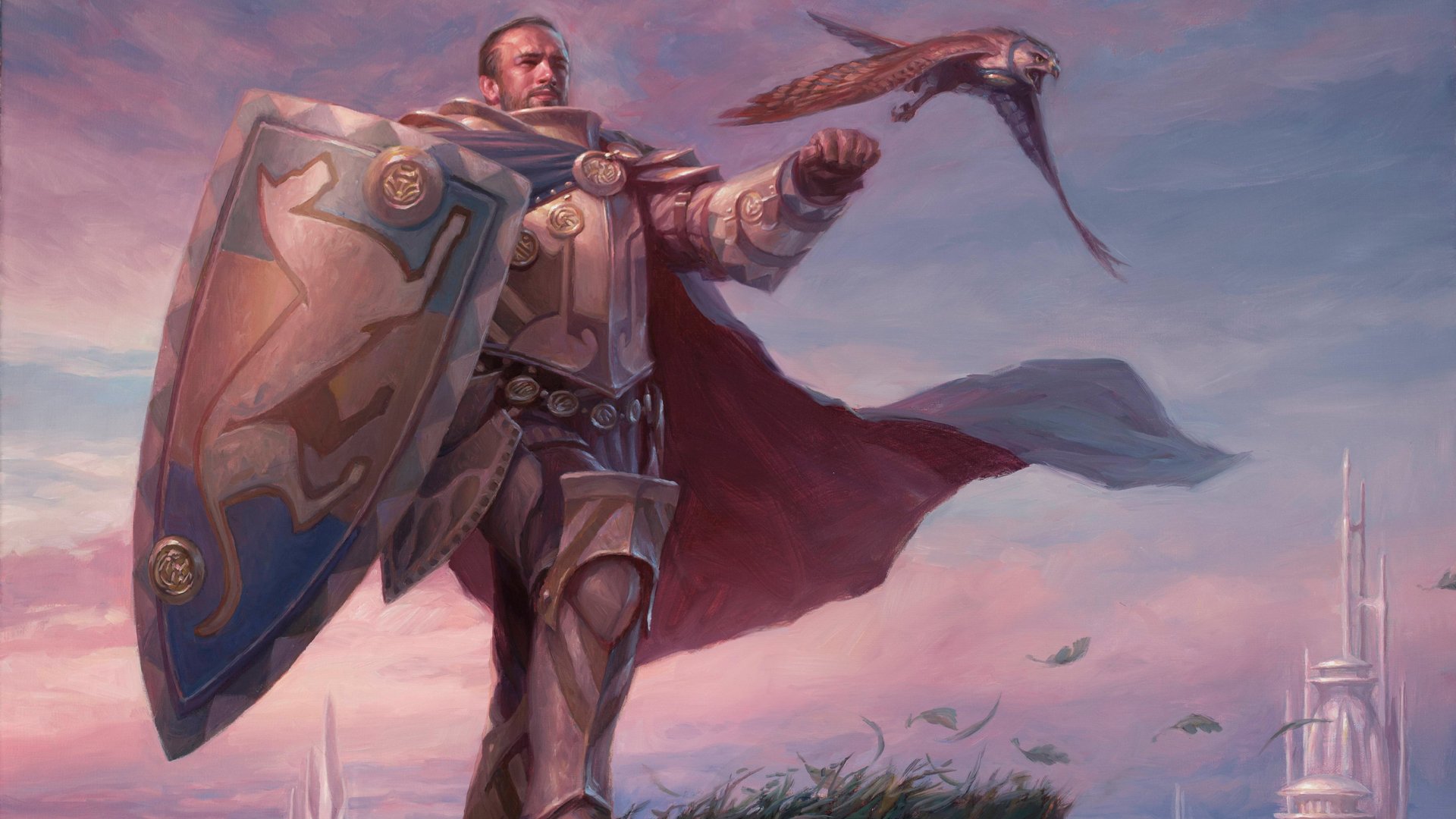
Relentless Hunter
Level: 13
Relentless Hunter means that taking damage no longer breaks concentration for your Hunter’s Mark spell.
Nature’s Veil
Level: 14
Nature’s Veil is a bonus action that gives you the invisible condition until the end of your next turn. It can be used a number of times equal to your Wisdom modifier before you need a long rest.
Precise Hunter
Level: 17
Precise Hunter means you now have advantage on attack rolls against creatures targeted by your Hunter’s Mark spell.
Feral Senses
Level: 18
Thanks to Feral Senses, you gain 30 feet of blindsight – yay!
Epic Boon
Level: 19
You choose an Epic Boon from the list of DnD 2024 feats (see that article for more information).
Foe Slayer
Level: 20
The class capstone, Foe Slayer turns your Hunter’s Mark damage die into a d10 rather than a d6.
We’ll be updating this guide over time with even more advice on building and playing as a Ranger. For now, head to our DnD character builds guide for optimization inspiration. Keep an eye on the DnD release schedule, too – there’s plenty of new Ranger subclasses on the horizon.

